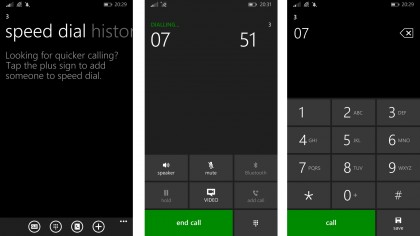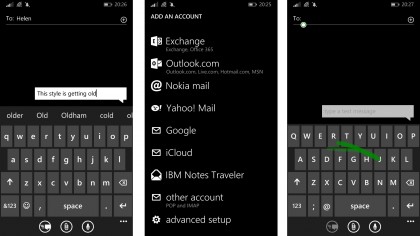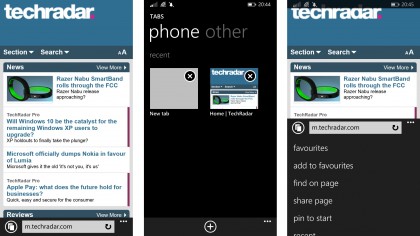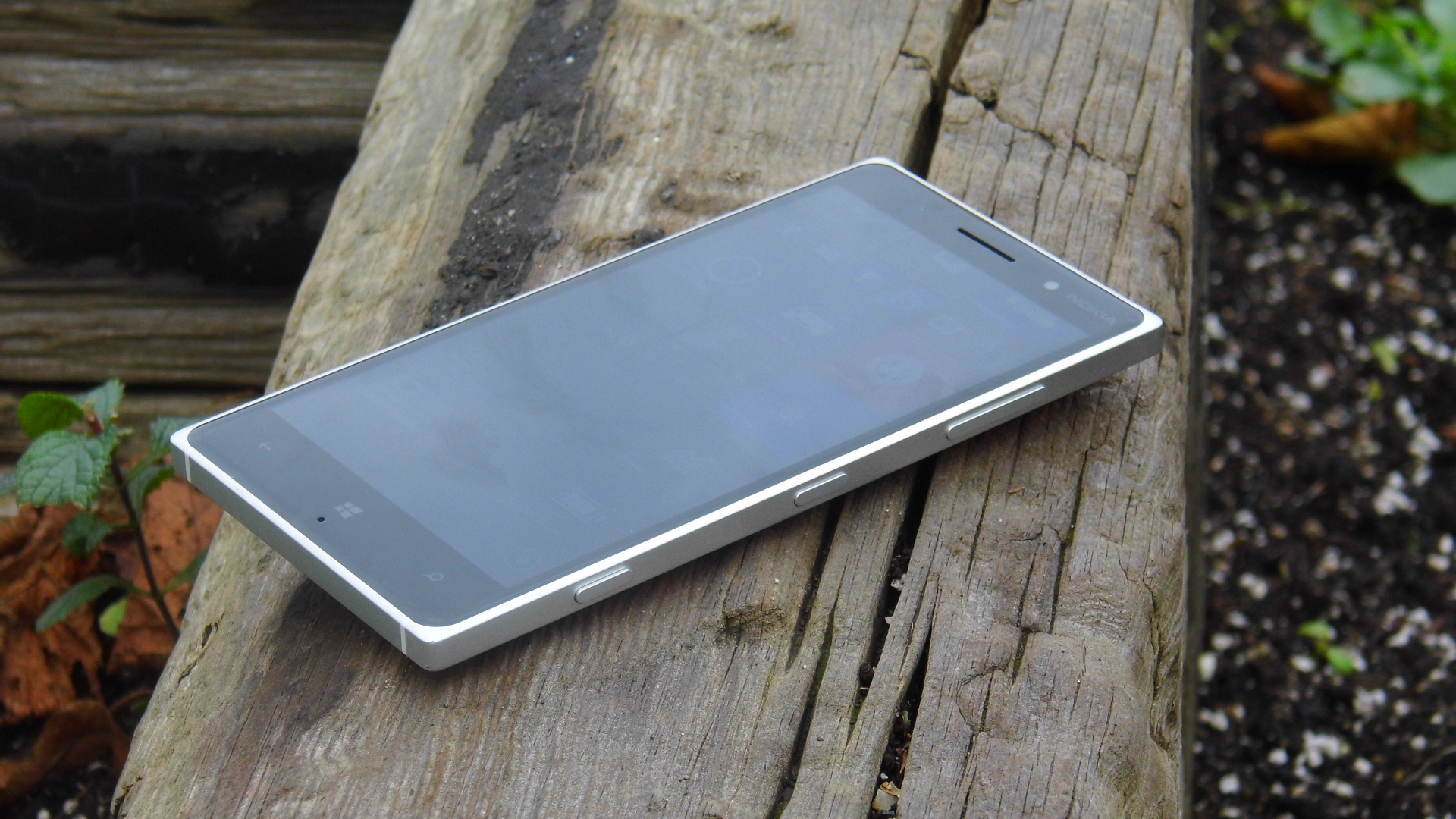Why you can trust TechRadar
It shouldn't be too hard to guess the two vital parts that make up a smartphone, it must be smart and it must also work as a phone. Believe it or not, even today some handsets still fail to live up to their billing as a phone with the Acer Liquid E3 lacking in this department.
Calling
Does the Lumia 830 suffer in the same sense though? Thankfully not. This could be down to a lot of factors, such as the decent signal holding, or the three microphones that are located all around the handset.
I was a little surprised at how well the signal was held with the Lumia 830 given its metallic shell, but Microsoft has managed to sort that out thanks to some plastic strips in the casing.

This decent calling though was marred by the poor handling of actually making the call to begin with. For starters, the integration of the dialler app and the contacts book is poor meaning that smart dialling is a no go.
I'm also not a fan of the dialler app itself, why is there two steps in order to load up the number pad that I want to access?
Overall, I have to say that whilst phone section of the Lumia 830 is perfectly functional, it is handled much better software wise on its Android brethren.
Messaging
As with the calling capabilities of the Lumia 830, messaging is handled well, although it still proves to be a little frustrating. Just take a look at the keyboard for example.
Compared to the stock offerings on iOS and Android, Microsoft's keyboard attempt holds up pretty well, but is still clearly the last choice of the three. Add in manufacturer's own take, the third party offerings that have long been able to be downloaded from Google's Play Store and now with iOS8 on the App Store as well, and you're left way behind.

Yes, auto correct is there but it lags just enough to become noticeable. Slide to text input is also available, but struggles for speed and accuracy when placed against the original Swype app, or even Swiftkey's offering. Microsoft needs to up its game, or at the very least open up the keyboard API to developers to allow third party apps.
The SMS app and email apps are also starting to appear a little dated. Compare them to the older iOS apps and you'd feel that they had been made in the same mould, but iOS has clearly moved on from that whilst Windows seems a little stuck.
Emailing is much the same, with the app feeling a little dated and a tad clunky. Users moving over from Android will be pleased to see that you can use your Gmail as a Windows Live ID if you wish, but even then a lot of Gmail's features are lost.
Internet
There are many that will recoil in horror when I point out that in order to surf the worldwide web, one must make use of a program that many have long considered obsolete... Internet Explorer. I admit, I am one such user and have become heavily reliant on Google Chrome across all other ecosystems; my laptop, Android phone and iPad all have it installed.
Thanks in part to a lack of other options, I found myself using IE and was pleasantly surprised. For those that have long ignored Microsoft's browser, you'll be rather surprised at just how far it has come since IE6.

IE now includes all the features that you would expect from a standard mobile browser; tabbed browsing, full page views, the ability to disable pictures and even Do Not Track. It does place the URL bar at the bottom of the page though, something that I have never really gotten my head around thanks to 14 years of always finding it at the top.
Pages loaded swiftly over both a 3G and WiFi connection, both mobile and desktop sites. Things will only get faster if you happen to live in a 4G enabled area too.
